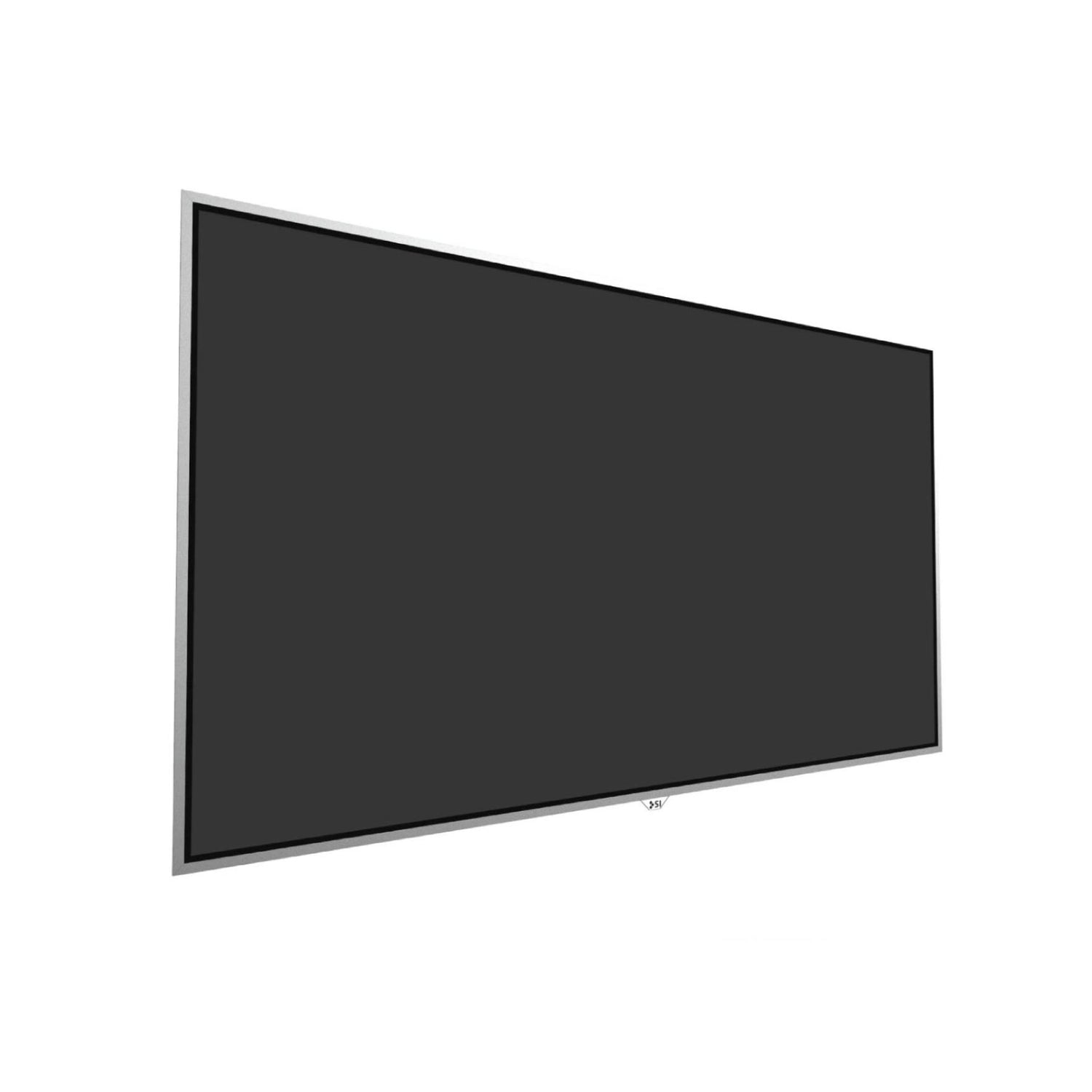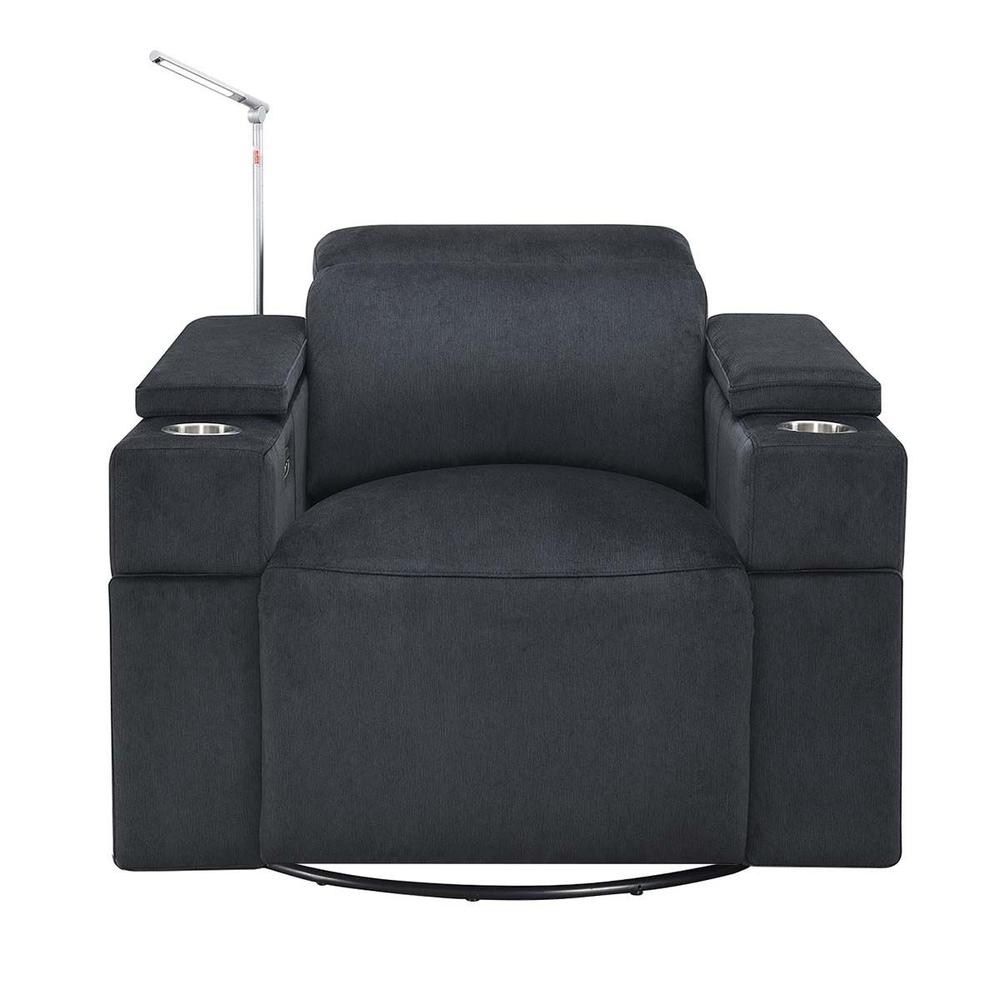What are the best colors to paint a home theater?

Learn what you should know about painting a home theater from the professionals
When you’re building a home theater, the three things you need are a projector, a screen and a sound system. After that, it’s pretty much all about the design and aesthetics of the room.
Of course don’t overlook the design of your home theater. You’ll want to build a movie watching space that’s enjoyable to spend time in. To achieve this, you’ll need to think about the atmosphere you want to create in the media room. One of the most crucial components to creating that ambiance is something as simple as the paint on the walls and ceiling.
5 best colors to paint your home theater
Dark Gray/Slate/Charcoal

50 shades of gray isn’t just a saucy movie, it’s also one of the best colors to paint your home theater. Dark gray walls will give your cinema a sleek modern look. Gray paint colors lend a tranquil, soft, and moody feel; perfect for movie watching. The darker the gray the better as they’ll be better at absorbing extra light and making the image on your home movie theater projector pop even more.
Black

Black will always be one of the best colors to paint a home theater because it will not reflect light. This is crucial for watching movies. An all black room will increase the perceived contrast of the picture on your projection screen. Matte black or flat black will make the screen the absolute center of attention, greatly enhancing your cinematic experience. Black is a good color if you only plan to watch movies, if you plan to also use your media room with the lights on, black walls can make the room feel monolithic and foreboding.
Dark Red/Burgundy/Maroon

Have you ever wondered why movie theaters have red seats and curtains? It’s not just for style (though they do look quite swanky). Movie theaters used red because it's the first color the human eye loses sight of in low-light conditions. This means the room will seem darker.
Science aside, red movie theater rooms bring us back to the days when the only way to see a movie was to go to the cinema in town. If you want to add a more classic movie watching atmosphere, a dark red is the color to go with.
Earth Tones/Dark Brown/Forest Green

Earth tones and dark browns provide a richer and warmer atmosphere to your movie room. Deep browns can brighten up the room and give it a more cozy feel if that’s what you want. Great for those who love to watch movies while cuddling.
Navy Blue/Dark Blue

Blue colors can produce a relaxing and calming effect. People often want their media watching space where they unwind to have the same effect. That’s why navy blue is such a great choice for your home movie room. Deep hues can work wonders in a cinema to create a snug, inviting feel. White trim goes amazingly with navy blue walls.
What colors should you paint your home theater? What colors should you avoid?
When it comes to painting your home theater, there are a few things to consider, and the paint color is arguably one of the most important things.
Make sure you stick to darker hues. Lighter tones must be avoided as the light from the screen is more likely to glare off light colors. Stay away from light colors like whites, yellows, creams, etc. These colors will only reflect light, distracting your eyes and keeping you from paying attention to the film.
Instead, dark grays, black, navy, dark browns or dark emerald-green are perfect choices. For a traditional cinema look, choose a dark red shade of paint such as maroon or burgundy to mirror the red curtains you find in vintage cinemas or theaters.

If you want your home cinema to be a relaxing oasis where you can escape the hustle and bustle of everyday life, then go for calming dark colors like green, beige, violet, gray or blue.
That said, the size of the media room should influence your color decision. A small room can feel cramped and claustrophobic if it is painted in colors that are too dark. Instead, neutral colors such as gray or beige are a good choice for creating a relaxing and comfortable environment. If you also plan to use the room for gaming or entertaining, you may want to opt for a somewhat brighter color that will help to liven up the space.
If you already have existing décor in your home movie cinema, don't choose colors that will clash with your furniture or carpeting. If you haven’t bought home theater seating or carpeting yet, you may want to consider picking those before you paint the walls.
What color should I paint the cinema’s ceiling?
In most rooms you’ll want to use a bright white or other light color. Your at-home cinema is not like those other rooms. Don’t use white or any light-colored paint on your ceiling. It’s best to go with a dark neutral shade such as Dark Grays. You can also go for a shade a little darker than your walls. Doing so will help you add dimension to your space.
Do you need special paint for home theaters?
When painting your theater room, you wouldn’t need special paint. However, it’s advisable that you choose flat paint with a neutral shade. Go with a flat or matte finish as this will avoid reflection and add to the immersive experience. Avoid satin, gloss, or semi-gloss paint as much as possible.
Because your movie watching room should feel luxurious you’ll want to consider investing in a high end interior paint to ensure the best possible result.
Home theater paint
While regular paint will work just fine you may want to consider getting acoustic dampening paint for your home theater. This specially formulated paint from Paint On Screen, completely engulfs your projection environment with a sound dampening layer of paint.
Not only does this acoustic paint reduce noise it also absorbs ambient light off walls and ceilings that can carry the hue or color of those walls. This hue can, in turn, tint the projected image on the projection screen. Color shift, as it is called, directly affects your projector's perceived color reproduction. By using this special home theater paint you’ll get improved visuals and clearer audio.
Tips for painting a home theater
- Paint your ceiling darker - You’ll want to have a dark color on your ceiling to avoid light reflection. Using a darker shade than your walls will help add dimension to your space.
- Get a flat paint - When choosing paint for your theater room, you should go for an eggshell or matte paint. Going for this type of paint will help you reduce the number of reflections in your room. However, it’s worth noting that these types of paint can easily show wear.
- Prep is everything - If you plan on doing it yourself, be sure to get your workspace prepared by moving furniture, setting out drop cloths, taping, and more. This will save you a lot of time once you begin painting.
- Don’t be afraid to add a pop of color - If you’re worried that darkly painted room will look to drab, add an accent wall. Opt for subtle shades that will complement the main color scheme.
- Take your screen off the wall before you paint - This may seem like common sense, but you’d be surprised at the number of people who tried to paint around their screen only to wind up with distracting flecks of paint on the surface.
- Get more paint than you think - It’s better to have too much paint than to run out in the middle and need to go out and buy more.
- Make sure you're using the right paint - Choose a high-quality, low-odor paint that can be applied in thin layers. You don't want to have to apply multiple coats of paint, because that will take too much time and effort.
- Use brushes that are designed for the job - they'll make it easier for you to get into small corners, trim, and other hard-to-reach places.
How long does it take to paint?
When it comes to painting your theater room, the time needed depends on the paint you’ll be using and the size of the space. A painting project can last anywhere from one to a few days depending on how big the room is.
Prep adds to this timeline, so an empty room will take a lot less time than an already furnished space. You will need a maximum of 4 hours of prep time.
Your paint will need between 12 and 24 hours to cure. Your environment can also affect how fast your paint dries.
If you're just repainting walls that are in good shape and in a similar tone, so it just needs one coat, then it will just take an afternoon. And if you’re easily distracted, a weekend at most.
If you're starting from scratch with new drywall where the ceiling and trim need painting and if it needs several coats of paint, then it could take around 30-40 hours depending on the size of the space and the experience of the painter.
Regardless, a good painter will be able to complete an average sized project in just a day.
What supplies will you need?
A solid painting supply checklist will include rollers, brushes, buckets, drops, tape, roller poles, and maybe some extra strength ibuprofen for the next day! If you're going to paint the ceiling, walls and trim then you'll need:
- Drop cloths and plastic sheeting to protect the floor and furniture
- Masking tape to mask off any areas you don't want paint on
- Paint tray
- Paint rollers and covers
- Paintbrushes
- Stepladder
- Paint for the ceiling, walls and trim.
- Extension pole
How much paint should I get?
The amount of paint you'll need will depend on the size of your home theater. As a general rule of thumb, one gallon of paint will cover approximately 400 square feet. Remember to overestimate the amount of paint so you don’t run out. You can use this paint calculator to help you determine how many gallons you need. Most home theaters typically need 2-4 gallons of paint.
How much does it cost to paint a home theater?
If you're doing it by yourself, then you'll only have to pay for the materials and supplies needed.
A gallon of paint typically costs about $20 per gallon for low-end and $30 to $55 for higher-end brands. Special home theater paint costs about $70 per gallon. That extra cost however more than pays for itself by the improved audio and visual experience.
If you’re hiring a pro to do the painting, a professional painter's average hourly rate is around $50/hour. Hiring a professional will likely cost between $500 and $2,000, depending on the size of your home theater and the amount of work required. It could be significantly more depending on the size, finishes, etc.
Is it better to use professional painters or to DIY the painting?
You might be tempted to pull out your roller and paint your theater room yourself. However, knowing whether DIYing your media room, greatly depends on your skill level. As with any home project, if you don't know what you're doing, hire a pro. It will save you a lot of time and headaches, as well as provide a far more high quality result. The worst thing you could do is spend days doing it yourself only to have to call in a pro to fix a shoddy job!
Home theaters are usually high-priced upgrades to houses, which means that you want painting done right the first time.
If you're on a budget, then painting your home theater yourself is a good option to save money. Just make sure you take the time and have the right tools to get a professional looking room.













